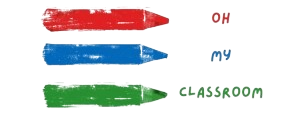The early years are a critical time for cognitive, social, and emotional development, and it is during this period that children are most receptive to absorbing new knowledge.
However, teaching young children can be quite challenging, as their attention spans tend to be shorter and their energy levels seemingly endless.
So, how can we make learning an enjoyable and engaging experience for 4 & 5 year olds?
Enter a world of endless possibilities with these fun & easy Learning Activities for 4 & 5 Year Olds specifically designed to captivate the curious minds of preschoolers and kindergartners.
“Sink or Float” Experiment:
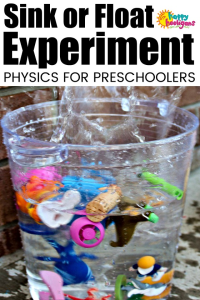
Gather a variety of objects such as a toy car, a feather, a rock, a plastic bottle, and a rubber duck. Fill a large basin or tub with water and invite your child to predict whether each object will sink or float. Encourage them to test their predictions by placing each object in the water one at a time. This activity promotes critical thinking skills, observation, and an understanding of basic scientific concepts.
Shape Tracing and Drawing:

Provide your child with a set of shape stencils or draw simple shapes on paper. Encourage them to trace and identify the shapes. Afterward, invite them to use the shapes as building blocks to create their own drawings. This activity enhances fine motor skills, shape recognition, and creativity.
Related: 20 Fun Brain Development Activities for 2 Year Olds
Letter Hunt:

Write uppercase and lowercase letters on small cards or pieces of paper and hide them around the room. Challenge your child to find and identify each letter. You can also provide a small basket for them to collect the letters as they find them. This activity reinforces letter recognition and visual discrimination.
Nature Collage:
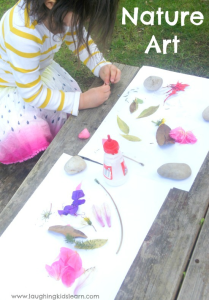
Take your child on a nature walk and gather various leaves, flowers, and twigs. Provide them with a piece of paper and some glue, and encourage them to create a nature collage by sticking the collected items onto the paper. This activity promotes creativity, appreciation for nature, and fine motor skills.
Related: Does Preschool Count as Child Care for Taxes
Obstacle Course:
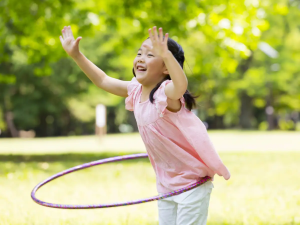
Set up a simple obstacle course in your backyard or living room using pillows, cones, hula hoops, and other safe objects. Designate different stations with tasks such as jumping, crawling, balancing, or tossing a ball. Guide your child through the course, helping them complete each task. This activity improves gross motor skills, coordination, and problem-solving abilities.
Pattern Play:
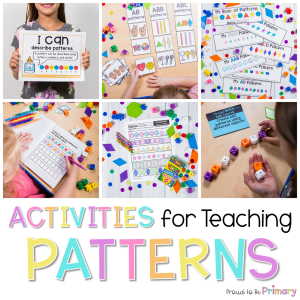
Create simple patterns using objects such as colored blocks, buttons, or stickers. Start with a basic pattern, such as red-blue-red-blue, and encourage your child to continue the pattern. As they grasp the concept, introduce more complex patterns. This activity develops critical thinking skills, pattern recognition, and logical reasoning.
Community Helpers Dress-Up:
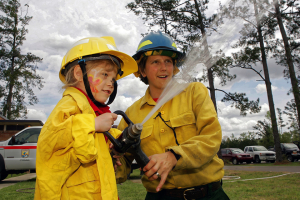
Gather various costumes and props representing different community helpers, such as doctors, firefighters, or chefs. Let your child dress up and engage in imaginative play, taking on different roles and acting out scenarios. This activity promotes creativity, social skills, and an understanding of various occupations.
Memory Game:

Prepare a memory game by placing several pairs of matching cards face-down on a table. Take turns flipping two cards at a time, trying to find a match. Encourage your child to remember the positions of the cards to improve their memory skills. This activity enhances concentration, memory retention, and cognitive development.
Name Collage:
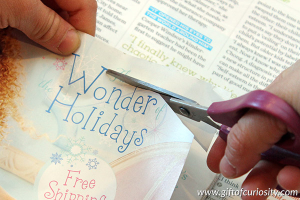
Write your child’s name in large letters on a piece of paper. Provide magazines, newspapers, or catalogs, and assist your child in finding and cutting out letters that spell their name. Help them arrange and glue the letters onto the paper to create a personalized name collage. This activity reinforces letter recognition, fine motor skills, and spelling.
Building Bridges:

Using wooden blocks or plastic bricks, challenge your child to build different types of bridges, such as a simple beam bridge or an arch bridge. Discuss the characteristics and functions of each bridge type as they construct their designs. This activity promotes problem-solving abilities, spatial awareness, and an introduction to basic engineering concepts.
Rainbow Scavenger Hunt:

Create a rainbow scavenger hunt by assigning a color to each child. Provide them with a basket or bag and ask them to find objects around the house or outside that match their assigned color. Encourage them to collect items and assemble a rainbow display. This activity promotes color recognition, observation skills, and sorting abilities.
Storybook Charades:

Choose a favorite storybook and have your child act out scenes or characters from the story without speaking. Encourage them to use gestures, facial expressions, and body movements to convey the story. This activity enhances language skills, creativity, and communication.
Shape and Number Hopscotch:

Draw a large hopscotch grid on the floor using different shapes and numbers instead of traditional squares. Call out a shape or number, and have your child jump to the corresponding shape or count to the desired number. This activity reinforces shape and number recognition, gross motor skills, and counting abilities.
Homemade Playdough:

Make homemade playdough together by combining flour, salt, water, and food coloring. Once the playdough is ready, encourage your child to shape and mold it into different objects, letters, or numbers. This activity improves fine motor skills, creativity, and sensory exploration.
Science in the Kitchen:
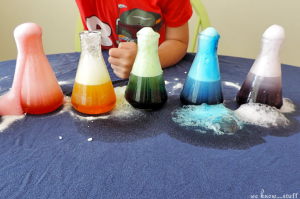
Engage your child in simple kitchen experiments, such as making a volcano with baking soda and vinegar or observing how different ingredients react when mixed. Discuss the scientific concepts behind the experiments and let them be amazed by the results. This activity fosters curiosity, critical thinking, and an early understanding of scientific principles.
Texture Collage:
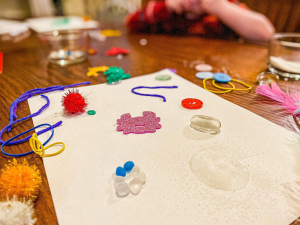
Collect a variety of textured materials, such as fabric scraps, sandpaper, bubble wrap, and feathers. Provide a large sheet of paper and some glue. Encourage your child to explore the textures and arrange them on the paper to create a texture collage. This activity stimulates sensory perception, fine motor skills, and artistic expression.
Rhyming Game:
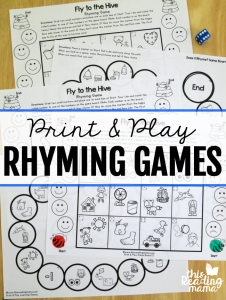
Choose a simple word, such as “cat,” and take turns coming up with words that rhyme with it, like “bat,” “hat,” or “mat.” You can make it more challenging by setting a timer or adding more words to the rhyme chain. This game strengthens phonemic awareness, vocabulary, and creativity.
Indoor Camping:

Set up a cozy indoor camping experience using blankets, pillows, and a pretend campfire. Encourage your child to gather their favorite books, flashlights, and snacks for a camping-themed reading session. This activity promotes imaginative play, language skills, and a love for reading.
Animal Charades:

Write down the names of different animals on small pieces of paper and place them in a jar. Take turns picking a paper and acting out the animal without speaking, while others guess the animal being portrayed. This activity enhances body language interpretation, social skills, and animal recognition.
Shape Walk:

Take a walk around your neighborhood or a nearby park and encourage your child to spot and identify shapes in their surroundings. Look for shapes in buildings, signs, playground equipment, or natural elements like leaves and rocks. This activity reinforces shape recognition, observation skills, and outdoor exploration.
